
Photo: ©️ Alan Ross Photography
Ansel Adams was an American photographer who became famous for his iconic images of the American West. His breathtaking black-and-white pictures helped to promote the conservation of nature as well as establish photography as a recognized and respected fine art. Scroll down to learn more about Adams with 10 interesting facts about his life and work.
And, if you can't get enough of Adams' breathtaking photos, check out the impressive collection of Ansel Adams books available from Little, Brown and Company.
Here are 10 fascinating facts about American photographer Ansel Adams.
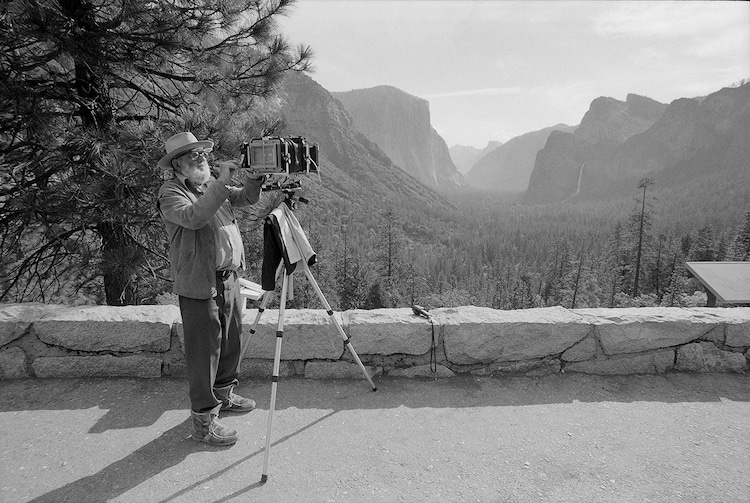
Photo: ©️ Alan Ross Photography
His love of nature began during childhood.
Adams was born on February 20, 1902 in San Francisco, California. He grew up in a house between San Francisco and Marin County before the famous Golden Gate Bridge was built and linked the two areas. Back then, the landscape was still wild, and Adams would often wander along long hiking trails on his own and explore nature.
He was injured during an earthquake.
Ansel was just four years old when San Francisco was hit by the great earthquake of 1906. During an aftershock, he lost his balance and fell face-first into a garden wall, breaking his nose. The damage was so severe that it remained crooked throughout his life.

Tenaya Lake, Mount Conness, Yosemite National Park, California, circa 1946.
Photo: Ansel Adams. © The Ansel Adams Publishing Rights Trust.
He almost pursued a career as a concert pianist.
Adams began teaching himself how to read music and play piano at age 12. By 18, he was on the path to becoming a concert pianist, but his plan changed when he visited Yosemite National Park for the first time in 1916. Throughout the 1920s, Adams’s frequent visits to the region sparked an interest in photography. “The splendor of Yosemite burst upon us and it was glorious,” he once wrote. “There was light everywhere. A new era began for me.” Using a Kodak Box Brownie camera, Adams began capturing that light as imagery. He contributed photos to the Sierra Club newsletter and opened a solo exhibition in 1928. By 1930, he decided to make photography his full-time career.
He became famous for his photo of a granite summit.
Adams’ first published portfolio, Parmelian Prints of the High Sierras, marked a professional breakthrough and led to a number of commercial commissions. It included his famous image Monolith, the Face of Half Dome. The image depicts a huge granite summit in Yosemite that reaches 5,000 feet above the valley. In April 1927, Adams climbed to a rock cliff known as the “Diving Board” to capture the winning shot.

Half Dome, Merced River, Winter, Yosemite National Park, California, 1937.
Photo: Ansel Adams. © The Ansel Adams Publishing Rights Trust.
He was a technical genius.
Many argue that there is no other photographer from his era that knew more about taking photos than Adams. He wrote 10 technical manuals on photography, and he even consulted Polaroid and Hasselblad on technical matters. His specialized knowledge and innovation helped to form the style of photography he became famous for.
In 1927, Adams wanted to capture the “majesty” of the Half Dome rock formation as he saw it in his mind’s eye. He set out to take his first exposure of Half Dome using a K2 yellow filter but realized that the contrast would not create a dramatic enough feeling. The creative photographer, however, was determined to create an image that expressed the same immense feeling that he felt while looking up at Half Dome that afternoon. Adams decided to use a deep-red filter to transform the bright sky into a dark background, resulting in tones that captured his sublime subject perfectly.
He didn’t always photograph landscapes.
Although he’s best known for his photographs of nature, Adams also dabbled in other subject matters. After the outbreak of World War II, Adams photographed the internment camp at Manzanar, one of many that detained Japanese-Americans. Adams donated the collection of over 200 photographs to the Library of Congress in 1965. He wrote, “The purpose of my work was to show how these people, suffering under a great injustice, and loss of property, businesses and professions, had overcome the sense of defeat and despair [sic] by building for themselves a vital community in an arid (but magnificent) environment … All in all, I think this Manzanar Collection is an important historical document, and I trust it can be put to good use.”

Sequoia Roots, Mariposa Grove, Yosemite National Park, California, circa 1950.
Photo: Ansel Adams. © The Ansel Adams Publishing Rights Trust.
One of his photographs has been to outer space.
In 1941, Adams was asked to create photo murals of national parks and monuments to decorate the halls of the United States Department of Interior. One of the most praised works from the collection is The Tetons and the Snake River, taken at Grand Teton National Park, Wyoming in 1942. It also became one of the images chosen by NASA and Carl Sagan to be carried on the Voyager I and 2 spacecrafts in 1977. They believed the photo captured the landscape so well that it would be ideal for showing extraterrestrial life what Earth’s environment was like.
He was presented with the Medal of Freedom.
In 1980, President Jimmy Carter awarded Adams the Presidential Medal of Freedom, the highest honor awarded to civilians. Through his art, Adams intended to showcase the beauty of national parks in order to encourage nature conservation. Carter acknowledged Adams’ environmental efforts and dubbed the photographer a “national institution.”
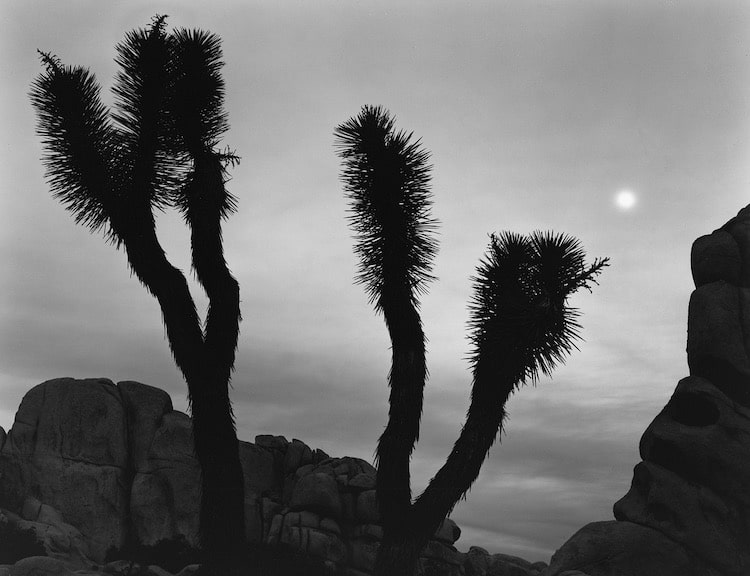
Moonrise, Joshua Tree National Park, California, 1948.
Photo: Ansel Adams. © The Ansel Adams Publishing Rights Trust.
He was friends with Georgia O’Keeffe.
Georgia O’Keeffe and Ansel Adams first met in Taos, New Mexico in 1929 and maintained a lifelong friendship. She was already established as an artist at the time, and Adams was just beginning his career. They bonded over their mutual appreciation of nature and were both drawn to the landscape of the American southwest. To celebrate the duo, the Georgia O’Keeffe Museum in Santa Fe, N.M. curated an exhibition in 2009 titled Natural Affinities. It showcased the works of both artists, side by side.
He couldn’t print every photo.
Throughout his career, Adams always developed and exposed his photos himself in his own makeshift darkroom. When he died of a heart attack in 1984 at the age of 82, he left behind a 40,000-plus photo archive, many of which were never printed because he simply didn’t have the time. Curators discovered thousands of negatives tucked inside shoe boxes, but they weren’t all black and white landscape photos—some were in color, and there were even some portraits.
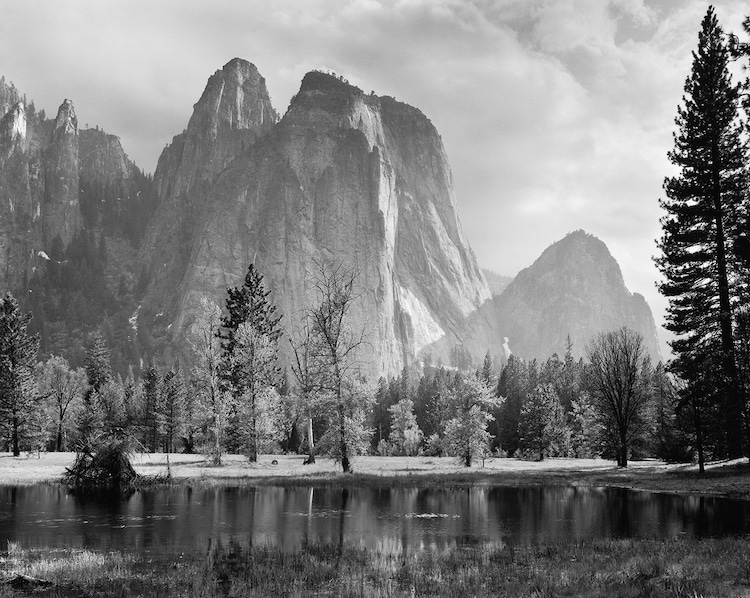
Cathedral Rocks, Yosemite National Park, California, circa 1949.
Photo: Ansel Adams. © The Ansel Adams Publishing Rights Trust.
See more of Adams' awe-inspiring photographs:
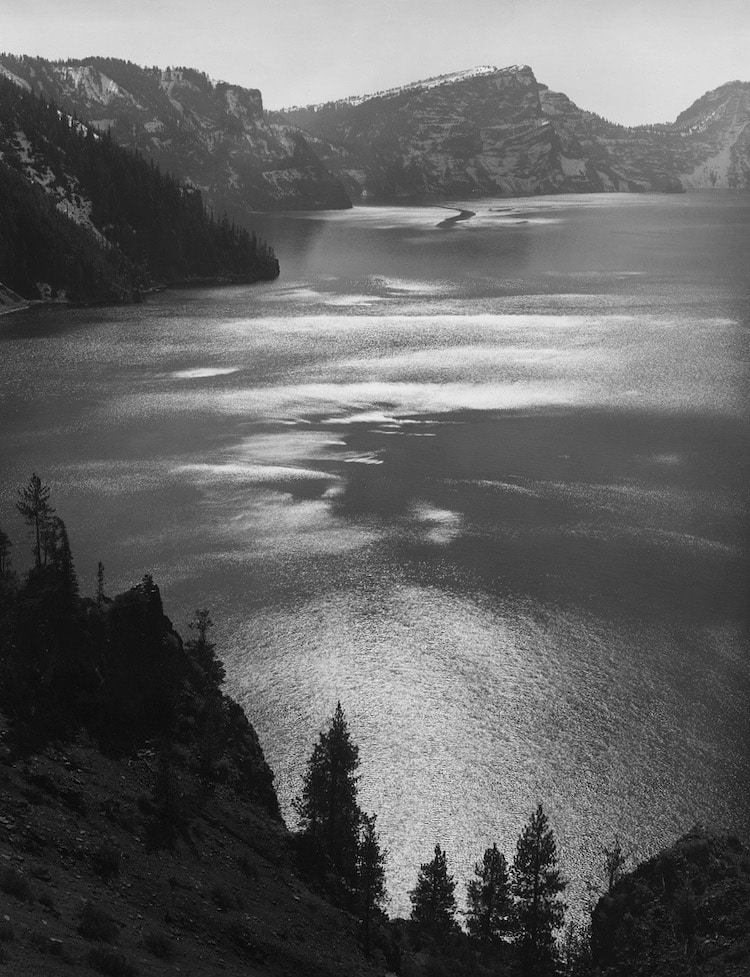
Afternoon Sun, Crater Lake National Park, Oregon, 1943.
Photo: Ansel Adams. © The Ansel Adams Publishing Rights Trust.
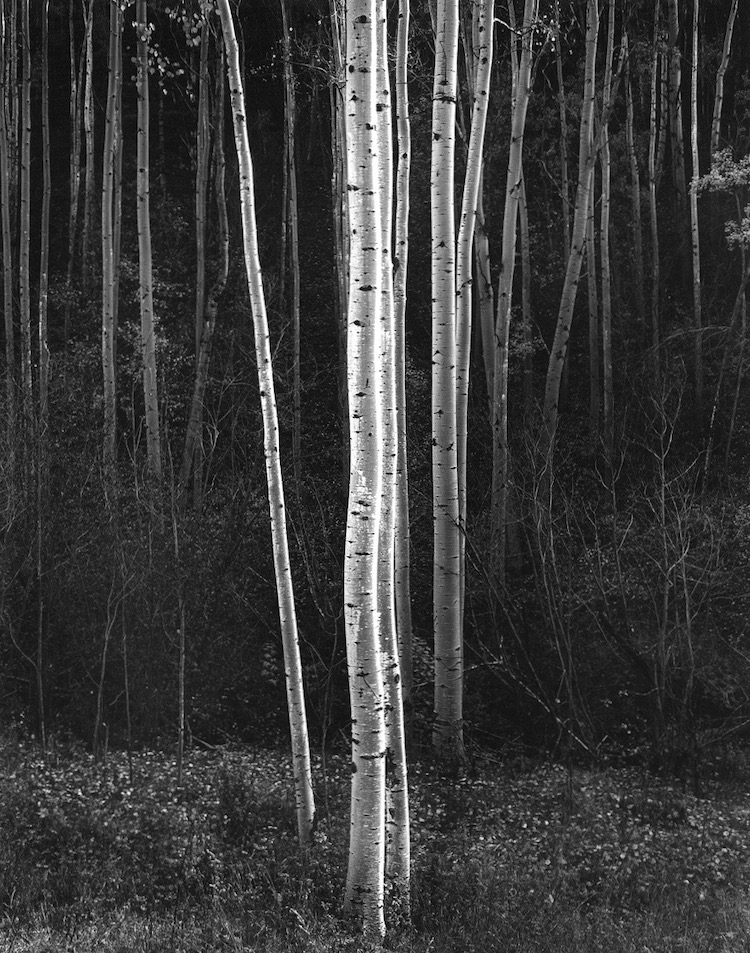
Aspens, Northern New Mexico, 1958.
Photo: Ansel Adams. © The Ansel Adams Publishing Rights Trust.
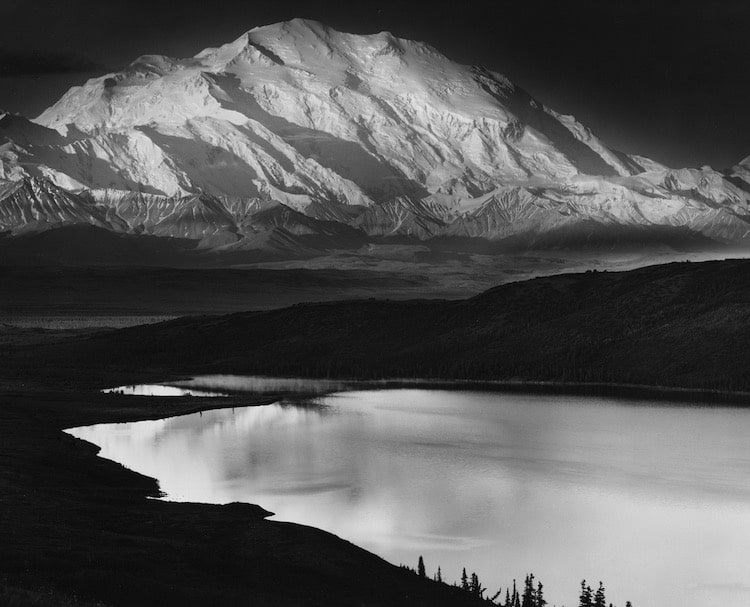
Denali and Wonder Lake, Denali National Park, Alaska, 1948.
Photo: Ansel Adams. © The Ansel Adams Publishing Rights Trust.
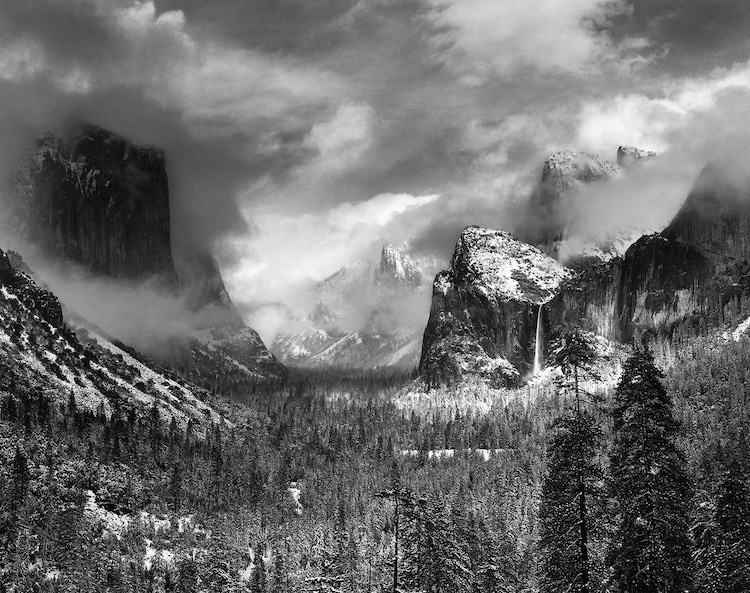
Clearing Winter Storm, Yosemite National Park, California, 1937.
Photo: Ansel Adams. © The Ansel Adams Publishing Rights Trust.
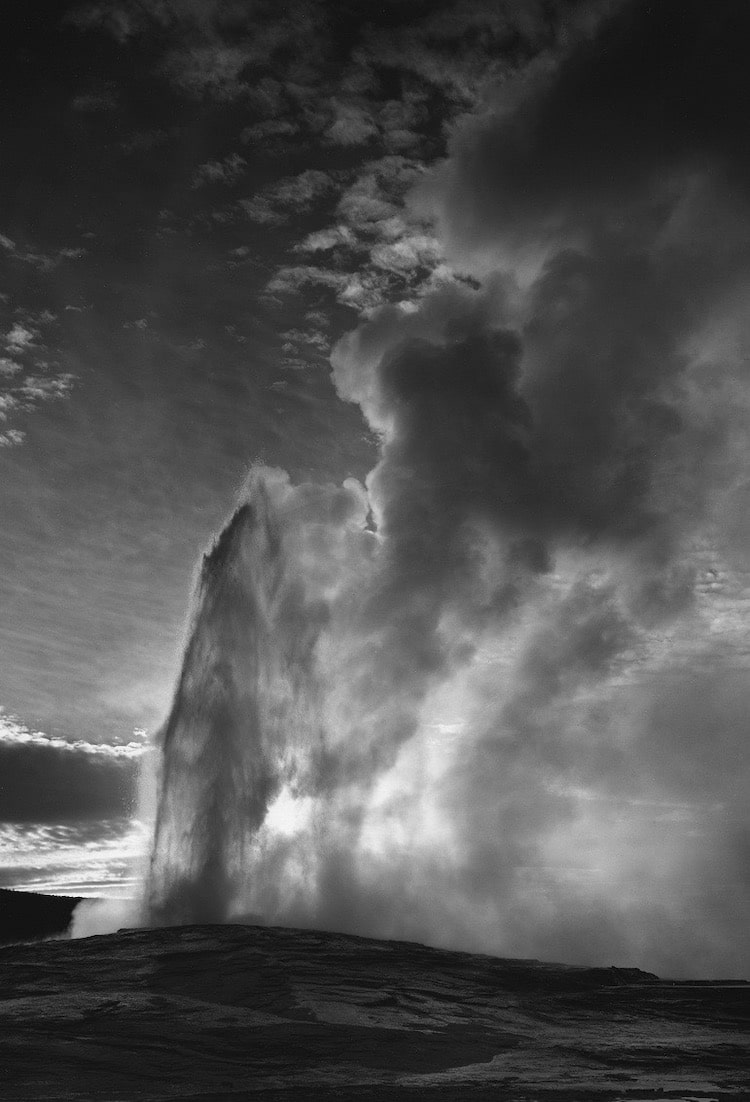
Old Faithful Geyser, Yellowstone National Park, Wyoming, 1941.
Photo: Ansel Adams. © The Ansel Adams Publishing Rights Trust.

Moon and Half Dome, Yosemite National Park, California, 1960.
Photo: Ansel Adams. © The Ansel Adams Publishing Rights Trust.
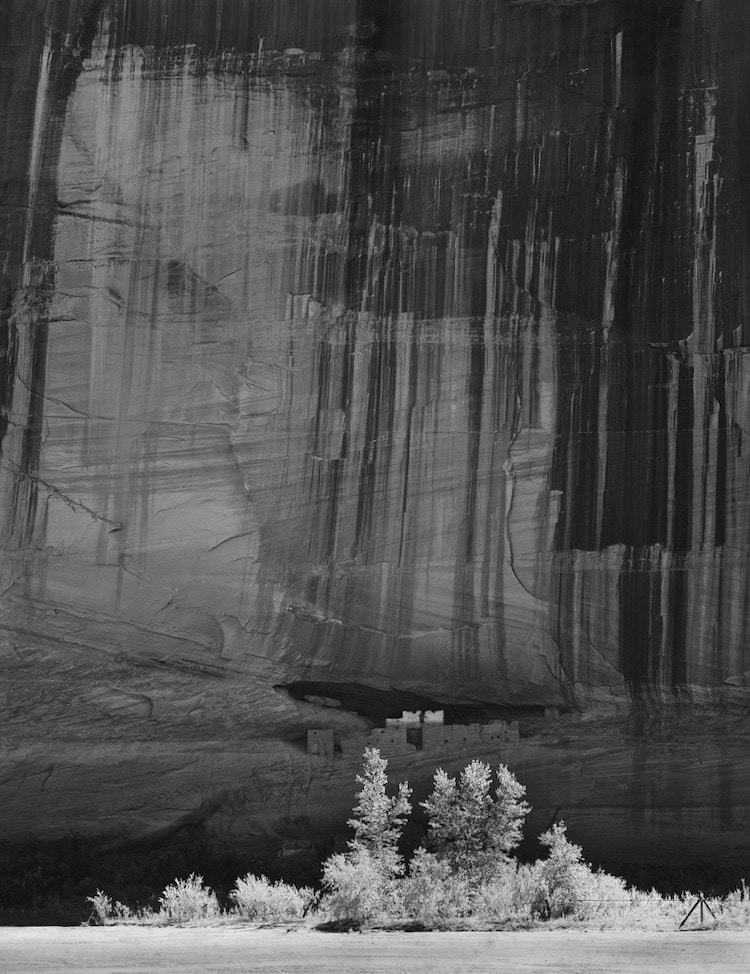
White House Ruin, Morning, Canyon de Chelly National Monument, Arizona, 1947.
Photo: Ansel Adams. © The Ansel Adams Publishing Rights Trust.

Dune, White Sands National Monument, New Mexico, 1941.
Photo: Ansel Adams. © The Ansel Adams Publishing Rights Trust.
Ansel Adams: Website | Facebook | Instagram | Twitter | Pinterest
My Modern Met granted permission to feature photos by The Ansel Adams Publishing Rights Trust and Alan Ross Photography.
Related Articles:
Ansel Adams’ Love Affair with Yosemite Celebrated in New Book
The Surprising Story Behind Ansel Adams’ Most Famous Photograph
US Government Offering ~$100k for Photographer Position Once Held by Ansel Adams
Images Reveal How Perfectly Ansel Adams’ Photos Align With the Golden Ratio






















































































